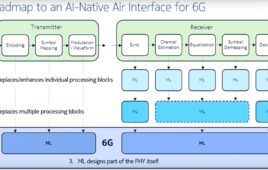The US Air Force is in the beginning stages of designing new sensors for its fifth-generation F-22 Raptor fighter jets. In addition, the aircraft will be receiving new software upgrades, hardware adjustments, antennas, and data link improvements. Sensor interoperability and two-way data links are considered essential components to Air Force combat and strategy. They’re intended to help the F-22’s speed and air-to-air combat supremacy complement and work alongside the F-35’s next-generation sensors, precision-attack technology, and multi-role fighting mission abilities.
The F-35 is engineered with dogfighting abilities, and can use its advanced sensors to detect hostile threats from exceedingly far distances. If the F-22 receives sensor upgrades of an equivalent potency, this could be ideal to set up earlier, longer-range aerial attacks. Technologies including 360-degree sensors and a long range Electro-Optical Targeting System give the F-35 the ability to destroy targets from these extensive distances, which mitigates the need to engage in dogfight scenarios.
Like the F-35s, the F-22s possess synthetic aperture radar and data links, radar warning receivers, and targeting technologies. Since the F-22 is considered the world’s best air-to-air platform, both fighter jets possessing the ability to transfer sensor information between each other would be a significant advantage to have in the battlefield. Either aircraft, for example, could breach enemy airspace and destroy air defense systems through utilizing stealth technology.
If something like a safe passageway is established for the fighter jets to launch future attacks, an F-22 could perpetually maintain and assure this vantage point, while an F-35 conducts maneuvers like close-air-support ground attacks or ISR missions using video surveillance technology whose quality is equivalent to that of drones. Simply put, either fighter jet would easily be able to identify targets for the other.
The F-22 and F-35 are both designed to retrieve “mission data files,” described as onboard libraries that store data pertaining to established threats and hostile entities in specific geographic locations. The database is incorporated into a radar warning receiver, so the aircraft can indicate these threats as early as possible.
Air Force researchers and developers cite the unveiling of China’s J-20 stealth fighter and Russia’s PAK-FA T-50 stealth aircraft as justifications to maintain the US’s technological advantage over these international superpowers. According to military officials, the upgrading of the F-22 fighter jets should officially begin by 2019.



